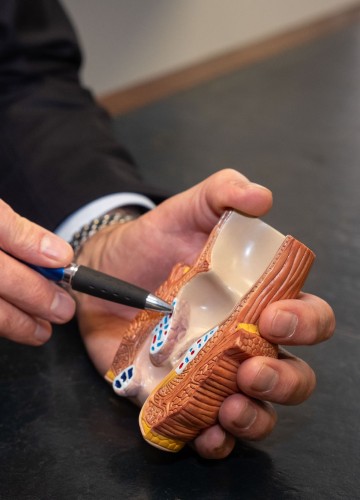Home / Procedures & Investigations / Anorectal Physiology
Anorectal Physiology
Anorectal physiology testing assesses the strength and function of the anal sphincter muscles. The tests also look at the coordination of these muscles and how much volume the rectum can hold.

What is involved in anorectal physiology testing?
Anorectal physiology uses a small device to measure pressure inside the rectum and anus.
The device is placed inside the back passage and connected to a computer. The computer trace can indicate how the muscles are contracting and whether they are activating and co-ordinating correctly.
Anorectal physiology can be useful for people having difficulty with passing a bowel motion including:
The Examination
The examination is not painful and only takes a few minutes. It will performed by one of our doctors or nurses during an appointment set up for that purpose.
Anorectal physiology is often performed with endo-anal ultrasound. Your specialist will advise you if this test might help guide your personalised treatment regime.
Step 1
When you arrive for the test you’ll undress from the waist down or change into a hospital gown. You’ll be asked to lie on your side on the examination couch with your knees up.
Step 2
Your doctor or nurse will perform a brief rectal examination before gently inserting the device (about the width of a pen) a few centimetres into your back passage.
Step 3
They will ask you to squeeze, relax, and cough in order to record the response of the muscles around your rectum and anus. They will then inflate a small balloon that is attached to the devise to assess sensation.




